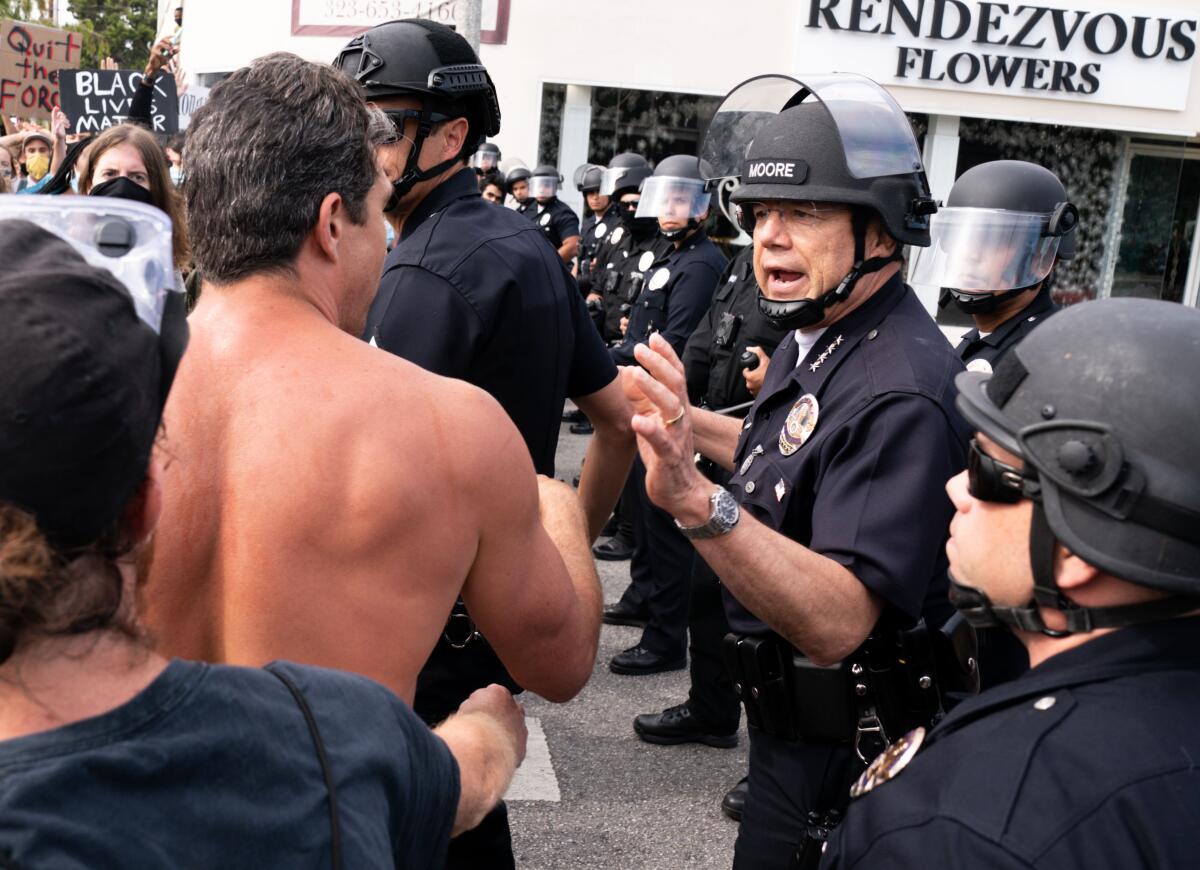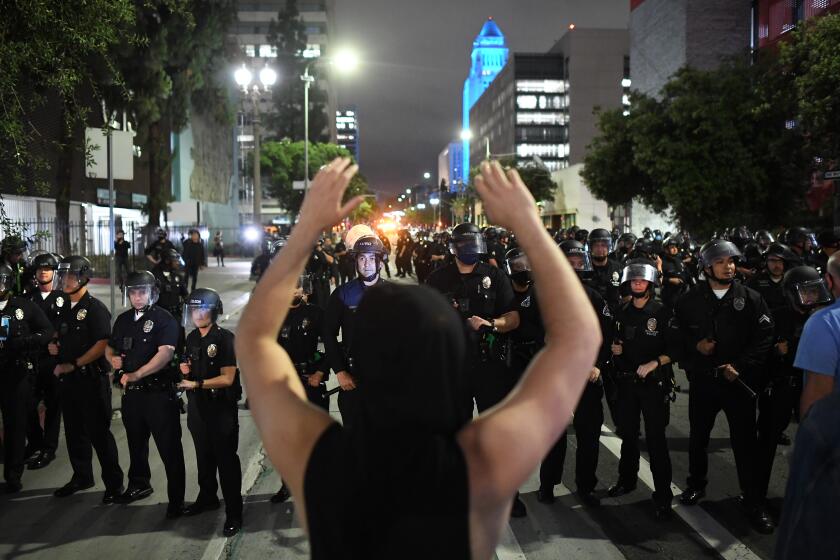‘Chaos in command’: Key points in report on LAPD’s missteps during George Floyd protests

- Share via
The Los Angeles Police Department faces new criticism for its handling of the protests and unrest after George Floyd’s death last summer.
On Thursday, a report commissioned by the City Council found deep flaws in the LAPD response. It was conducted by a panel of former Police Department commanders led by Gerald Chaleff, an attorney and former member of the LAPD and the L.A. Police Commission who has helped review the department’s handling of past unrest.
Here are some key points:
The LAPD mishandled the unrest that erupted after the death of George Floyd, according to a new report commissioned by the City Council.
‘Chaos in command’
- Even the LAPD’s own command staff didn’t always know who was in charge, which “led to a chaos of command,” the review stated. “When confronted by multiple large scale events, it is important that there be a clear chain of command, where everyone knows who is in charge, and those in charge provide clear direction,” the report said. “This did not consistently occur during the protests.”
‘Shadow teams’
- Secret “shadow teams” of undercover officers were sent into crowds without sufficient means of relaying their intelligence to commanders. And high-level leaders swooped into conflicts and gave orders that contradicted those already disseminated to officers, the report found.
Injuries, lack of training
- Hundreds of people were injured or alleged their rights were violated during the summer protests. Officers were sent into the streets with hard-foam projectile weapons that they weren’t adequately trained to use, and police commanders without up-to-date training in crowd control tactics were put in charge of volatile scenes, according to the report.
Ineffective tactics, poor planning
- Officers formed skirmish lines and squared off with unthreatening protesters who had their hands up, even as others who were throwing objects at police from deeper in the crowds and organized groups who were running teams of burglars into surrounding businesses were left to operate freely, the report found.
- Protesters accused of minor offenses that only warranted citations in the field were subjected to hours-long detentions, all part of a “last-minute, uncoordinated effort” by officers to arrest thousands without any clear plan for transporting or jailing those they were rounding up, the report found.
More to Read
Sign up for Essential California
The most important California stories and recommendations in your inbox every morning.
You may occasionally receive promotional content from the Los Angeles Times.












